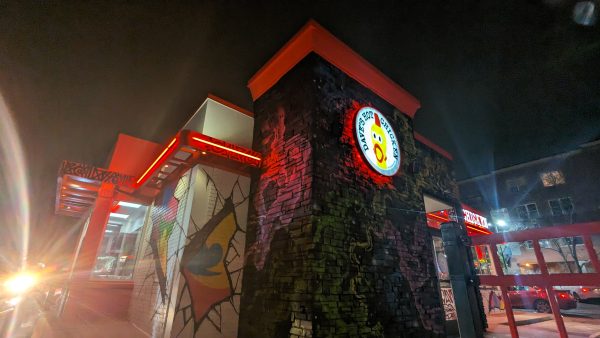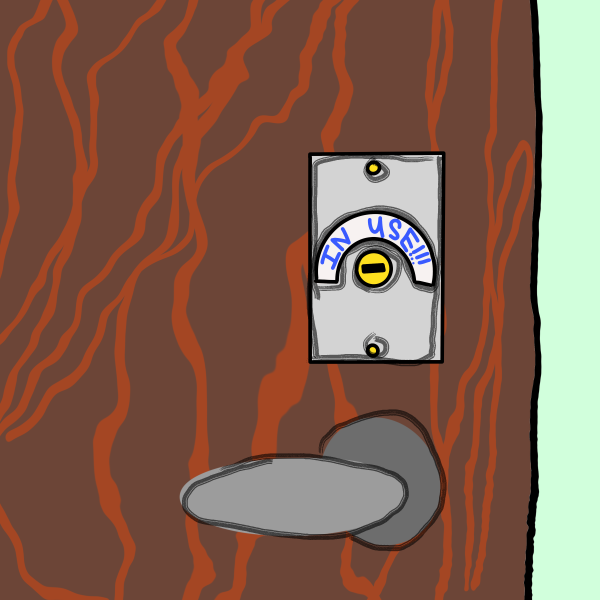Be careful, look both ways
When crossing the street becomes a risky game

March 15, 2017
One of the major selling points of Hamline is the benefit of having few streets to cross throughout campus. Overall, this statement is true. The majority of our campus is located in one central area. It doesn’t take a student much longer than five minutes to get from one class or commitment to the other. In truth, we don’t have to worry about crossing streets much when we’re on campus. It’s something that I personally didn’t give much thought to until this year. I live in the on-campus apartments, which are across from the Heights. This requires me to cross Englewood Avenue in order to get to the main campus. To get to my job, I have the pleasure of crossing Snelling Avenue nearly every day. Needless to say, I’ve become quite familiar with the environment of these two streets.
Hewitt Avenue is another street that runs through campus, but I tend to put Hewitt in a completely different category. Hewitt sees high concentrations of students attempting to cross it throughout the entire day, especially on the stretch that cuts directly through campus by Old Main. Cars usually know to stop, even if the students aren’t paying the best attention when crossing. Occasionally, it can feel a bit like a game of Frogger between people and vehicles, but most of the time there are no huge commotions.
Snelling, however, is a completely different story. There are a few spots on Snelling that pedestrians can cross at a light, much like at the popular intersection of Snelling and Hewitt. The wait times at these lights are usually long and frustrating, but most of the time the transition between cars stopping and people walking is pretty seamless. The key word here is “most.” As I said before, in order to get to work I have to cross Snelling. Multiple times I have been given the walk signal only to be in a close encounter with a car turning right on red. I’m not even exaggerating when I say that one time, when I was walking at dusk, a car came within inches of myself and a fellow pedestrian. I understand that no one is a perfect driver, but this experience made the notion of crossing Snelling even less appealing to me than it was prior.
There are a few places on Snelling between campus and Hamline Elementary frequented by students that don’t have any sort of stop light at all. Yes, they are technically crosswalk areas, but that doesn’t make them any safer. I know tutors at the elementary school who cross in these areas because it makes more sense than walking to a light, crossing and then back tracking. Snelling is always busy, and most of the time these crosswalks tend to be more pain than they are worth, as students can be left waiting for cars to stop or they can choose to dodge traffic and hope for the best.
The part of Englewood Avenue that runs through campus by the Heights, apartments and Sorin can be rather unpredictable. Whenever it’s time for me to cross it, I never know how the cards are going to be dealt. Will I be able to see past the parked cars on the street? Which way will traffic be coming? Will they decide to stop for me or keep going? It’s definitely a mixed bag, no matter what time of day it is. This causes a lot of uncertainty for students who need to get across Englewood in order to get to class.
One such student is Andrew Derickson, a junior who lives in the on-campus apartments. Andrew thinks that there should actually be a crosswalk implemented between the apartments and the Heights “because Englewood is a two-way parking street, and it is very difficult for drivers and pedestrians to see one another until the pedestrian begins to cross the street. If there was a cross walk with a sign between the apartments and the rest of the Hamline campus, the daily commute to class would be a lot safer.”
Personally, I think Andrew is completely correct. It is a solution to a problem that many people face daily, and would make both drivers and pedestrians more alert to their surroundings.
It goes without saying that it is impossible to label an entire college campus as 100% safe, and that includes its streets. In a perfect world, there would be no distracted drivers or pedestrians, and non-verbal communication would allow for crossing a street without flaw. This is not the world we live in, so all we can do is take it upon ourselves to be as in tune with our surroundings as possible. Be sure to take caution, regardless if you are driving or walking. Maybe someday we will have more crosswalks and signage, but for now we just have to trust ourselves and those around us.





